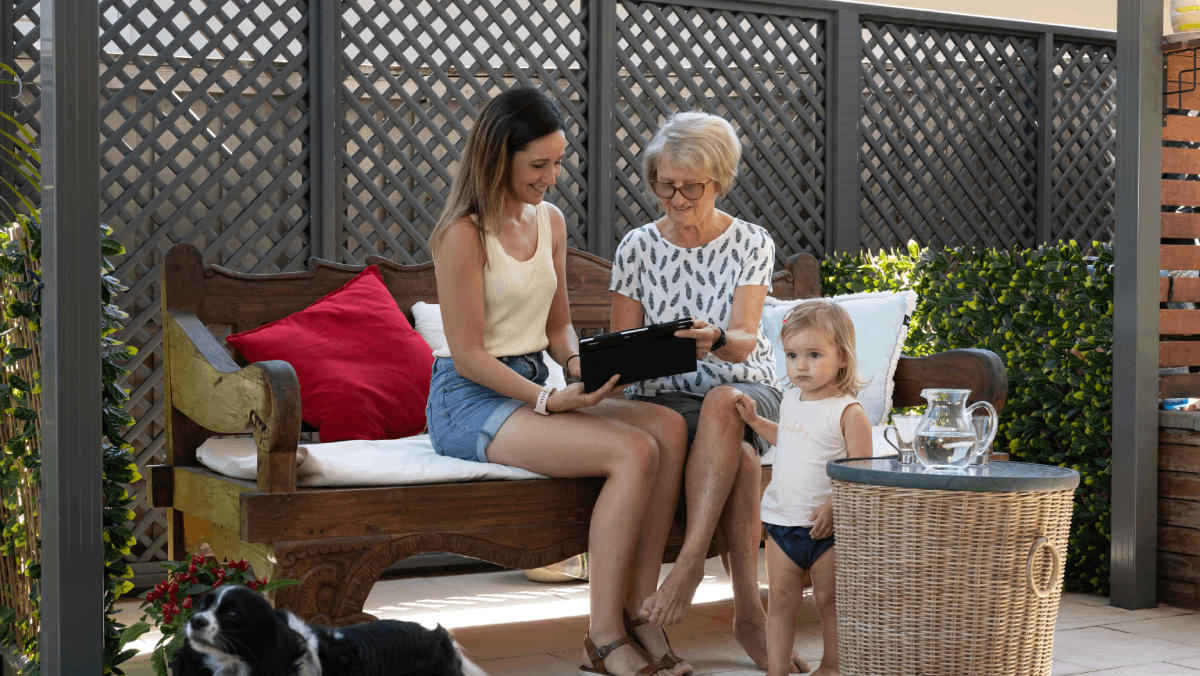How to invest in property using your SMSF

Update your budget
Use a simple framework like the 70-20-10 rule to guide your spending:
- 70% for essentials
- 20% for discretionary spending
- 10% for savings or debt repayments
If your income has dropped, adjust the percentages to reflect your new reality. The goal is to stay consistent, even if the amounts are smaller.
Last updated: 06 October 2025 | Estimated read time: 5 Minutes
Thinking about using your super to invest in property? It’s one way some Australians are entering the market, and it could help you build long-term wealth. But it’s important to understand how it works, especially if you're considering a self-managed super fund (SMSF).
With the rising cost of living, combined with uncertainty around interest rates and property prices, you may feel like buying a home or investment property is out of reach. But there could be a way for you to reap the rewards of property investment and set yourself up for retirement – by investing through your super. While some super funds let you invest in property indirectly or buy your first home through the First Home Super Saver scheme, SMSFs are different.
In this article, we’ll break down the different types of super funds and take a closer look at SMSFs so you can feel confident exploring whether investing in property through an SMSF could be the right move for you.
What are the types of super funds?
Most Australians have their super in one of four main types of funds:
Industry super funds
Retail super funds
Corporate funds
Public sector funds
What is an SMSF?
Like other super funds, SMSFs are a way for you to save for retirement. Unlike other super funds, SMSFs are self-managed. The members (no more than six) of the fund are usually also the trustees – which means they are responsible for running and making any decisions related to the fund.
In some cases, a corporate trustee is appointed to handle the decision making and management. If the SMSF has a corporate trustee, all members are directors of the trustee.
How does an SMSF work?
The rules for running an SMSF are more complex than other super funds. If you're considering setting one up, it's a good idea to speak with a licensed financial adviser first to see if it’s right for you.
Here are the key steps to set up an SMSF:
While there is no minimum amount you need to set up an SMSF, you need at least enough to make it cost effective based on set up and ongoing costs. The commonly suggested opening balance according to the SMSF association1 is upwards of $200,000.
Can I purchase property using my SMSF?
Using your super via an SMSF to purchase an investment property could be a useful way to generate wealth over the long term and build up your nest egg. But before you decide to invest in property through your SMSF, think about whether it aligns with your SMSF investment strategy and risk profile which may vary from person to person.
How can I invest in property through my SMSF?
Buying property using an SMSF is different to buying property with money from your savings account.
There are specific rules that apply to investing in property using an SMSF, including:
- Funds invested in an SMSF can only be used to provide for its members’ retirement. This is known as the ‘sole purpose test’.
- Property must be bought at ‘arms-length’, that means it can’t be from a related party of a member.
- No member or related party of a member can live in or rent the property.
- A member or related party of a member can lease a commercial property owned by the SMSF at market rates, but only to use for business purposes.
You can invest in property by setting up a separate trust within your SMSF. The money in that trust becomes a deposit and together with an SMSF loan (see more below) is used to buy the property.
Can I live in my SMSF property when I retire?
Yes, you can. When you retire, you have two options:
- Wind up your SMSF and sell the assets, including property, and receive the money in cash.
- Keep the SMSF running.
If you choose the second, you may be able to live in the SMSF property by doing an ‘in-specie’ transfer of ownership from the SMSF to you personally. This process isn’t as easy as it sounds so it’s a good idea to seek professional advice if you decide to take this route. There are also a few conditions you’ll have to meet if you want to live in the property at retirement:
- The property passed the ‘sole purpose test’ while owned by the SMSF.
- It has correctly transferred to you as the new owner.
- You’ve reached your preservation age and can access your super.
What is an SMSF loan?
A self-managed super fund loan lets you use your SMSF funds for a deposit to buy a commercial or residential property and borrow the balance. You can get an SMSF loan from your bank, or a non-bank lender like Pepper Money. Like a home loan, an SMSF loan is useful if your SMSF doesn’t have enough funds to pay for the property outright.
Borrowing through your SMSF to invest in property is restricted by tight borrowing conditions. These conditions are called a ‘limited recourse borrowing arrangement’ (LRBA). With a LRBA, you can only purchase a single asset – a residential or non-residential property. This asset is held in a separate trust so if the loan defaults, the lender can’t take any of your other assets. Because of this higher risk, SMSF loan interest rates may be higher than traditional home loans.
How much can I get from an SMSF loan?
At Pepper Money, we can help you with an SMSF loan worth up to 80% of the value for a residential property and 75% of the value for a commercial property, subject to eligibility criteria. Learn more about our SMSF loan options.
Want to apply for an SMSF loan?
If you’re eligible for an SMSF loan, once you’ve received professional advice, the next step is to get pre-approval. Whether you’re looking to use your SMSF to invest in residential or commercial property, we’re here to help.
Ready to take the next step and put your SMSF to work? Call us on 137 377, speak to your broker or Contact us to apply.
Sign up to our newsletter
If you like this article, you'll love our Really helpful newsletter.
Personal information is collected, used, stored and disclosed in accordance with Pepper's Privacy Policy. I understand I can unsubscribe at any time.
Information provided is factual information only and is not intended to imply any recommendation about any financial product(s) or constitute tax advice. If you require financial or tax advice you should consult a licensed financial or tax adviser.
All applications for credit are subject to credit assessment, eligibility criteria and lending limits. Terms, conditions, fees and charges apply.
The results of the borrowing power calculator are based on information you have provided and is to be used as a guide only. The output of the calculator is subject to the assumptions provided in the calculator (see 'about this calculator') and are subject to change. It does not constitute a quote, pre-qualification, approval for credit or an offer for credit and you should not enter commitments based on it. The interest rates do not reflect true interest rates and the formula used for the purpose of calculating estimated borrowing power is based on the assumption that interest rates remain constant for the chosen loan term. Your borrowing power amount will be different if a full application is submitted and we complete responsible lending assessment. The results in the calculator do not take into account loan setup or establishment fees nor government, statutory or lenders fees, which may be applicable from time to time. Calculator by Widgetworks.
Pepper Money Personal Loans is a brand of Pepper Money Limited. Credit is provided by Now Finance Group Pty Ltd, Australian Credit Licence Number 425142 as agent for NF Finco 2 Pty Limited ACN 164 213 030. Personal information for Pepper Money Personal Loans is collected, used and disclosed in accordance with Pepper’s Privacy Policy & the credit provider’s Privacy Policy.
Pepper Money Limited ABN 55 094 317 665; AFSL and Australian Credit Licence 286655 (“Pepper”). All rights reserved. Pepper is the servicer of home loans provided by Pepper Finance Corporation Limited ABN 51 094 317 647. Pepper Asset Finance Pty Limited ACN 165 183 317 Australian Credit Licence 458899 is the credit provider for asset finance loans.
Pepper and the Pepper Money logo are registered trademarks of Pepper Group Assets (Australia) Pty Limited and are used under licence.




